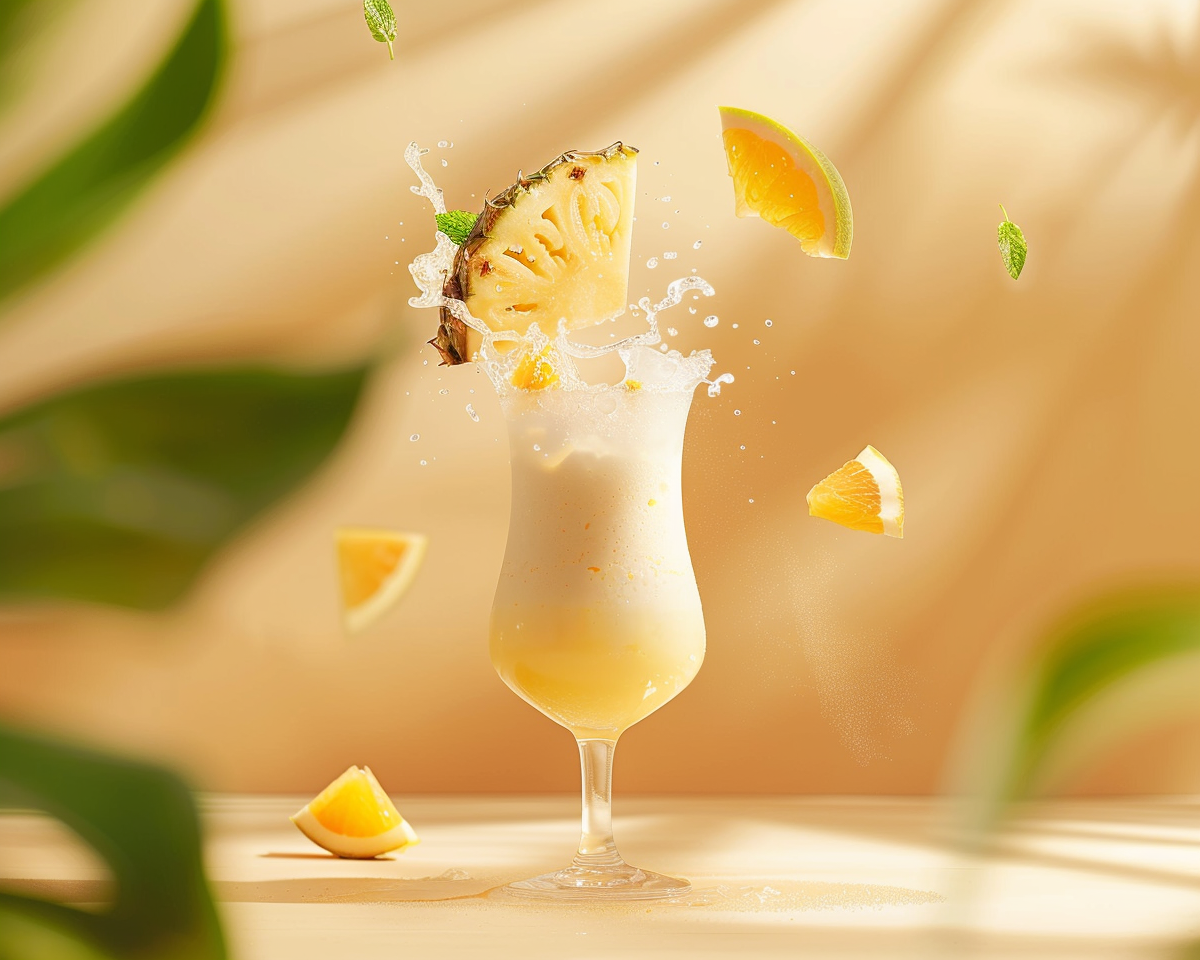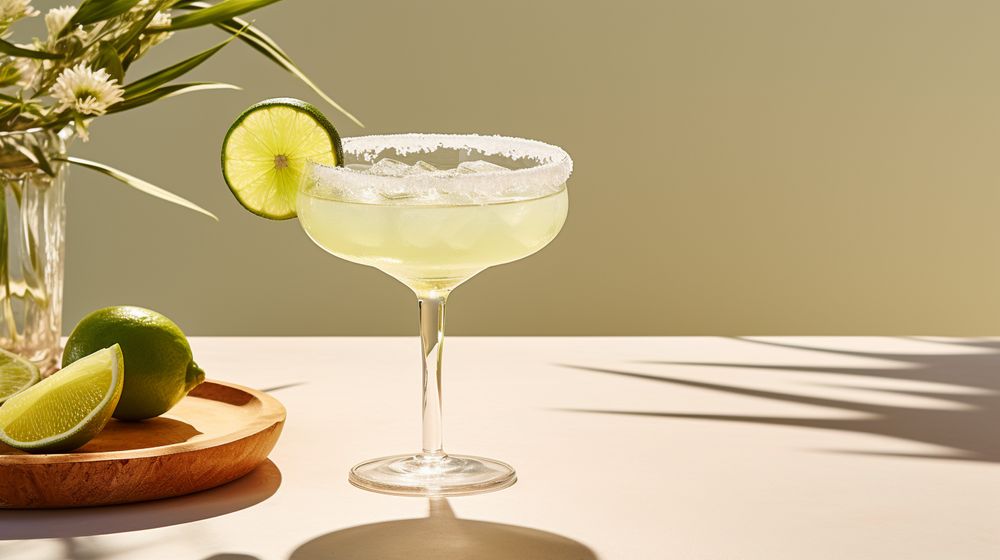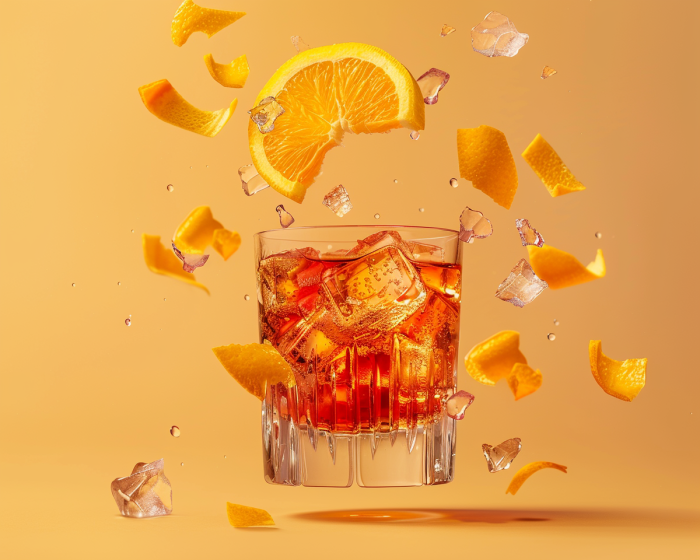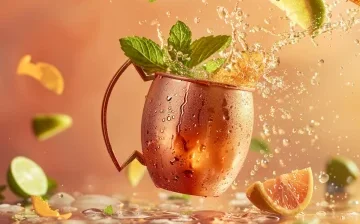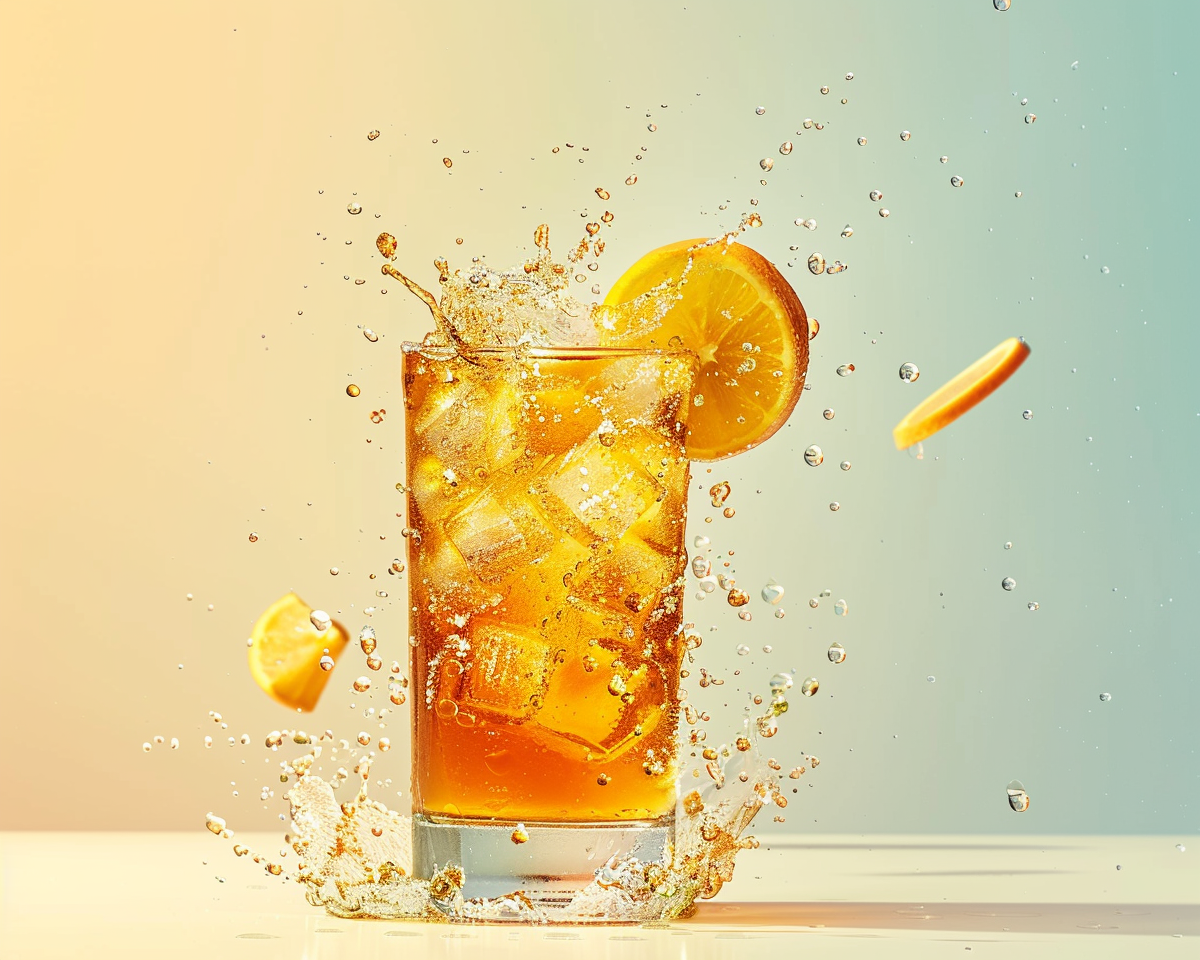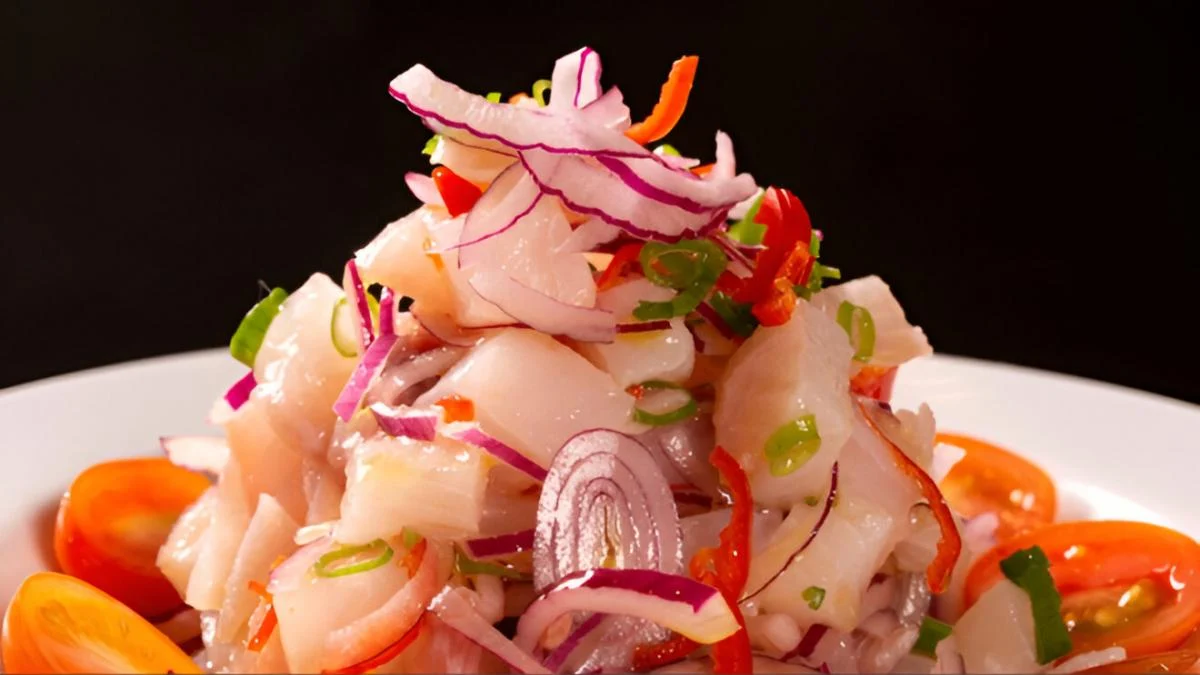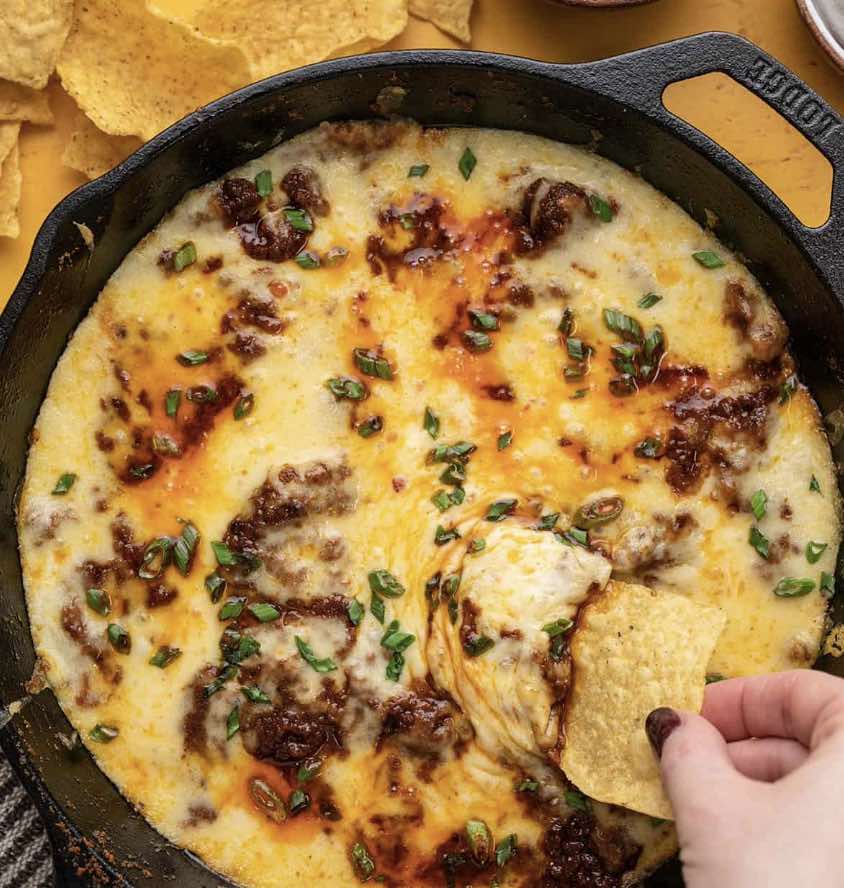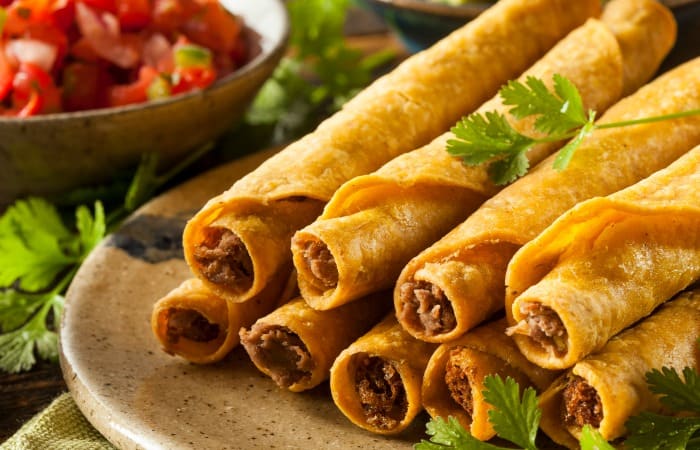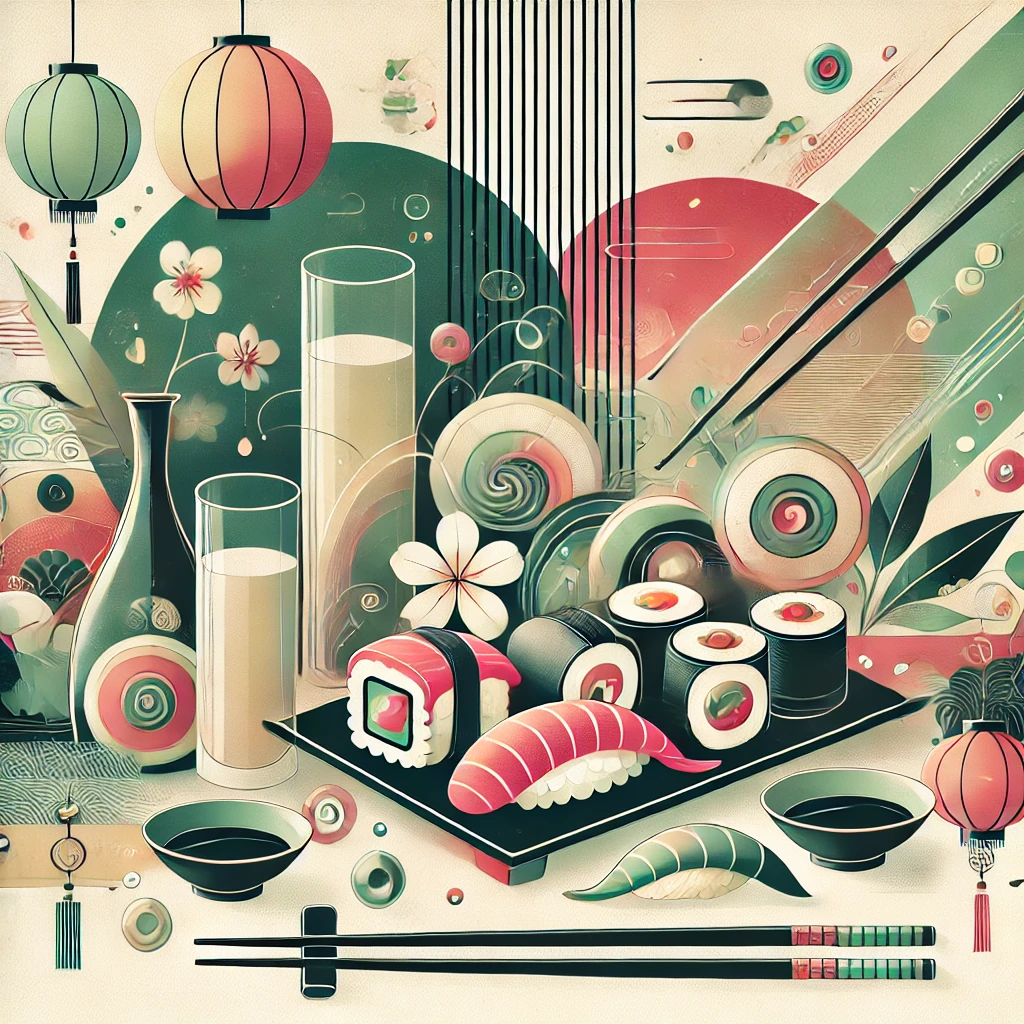Introduction to Rum: A Swig of Elegance and the Allure of Rum
You’ve probably had your fair share of spirits, but let’s talk about the magic potion that has been winning hearts for centuries: rum!
When you think of a Caribbean sunset, a sailor on the high seas, or perhaps even a pirate, rum is the spirit that likely springs to mind.
What is Rum?
At its heart, rum is a distilled alcoholic beverage made primarily from sugarcane juice or molasses.
This tantalizing drink boasts a variety of styles and flavors, from dark and spicy to light and sweet.
Its versatility has made it an essential ingredient in countless cocktails and a staple in liquor cabinets worldwide.
Sailing Through History: Rum’s Cultural Significance
Dive deep into the annals of history, and you’ll find rum’s influence pretty much everywhere.
From being a currency in the colonial era to playing a crucial role in the naval history of the world’s mightiest empires, rum’s story is as rich as its taste.
Cultures across the Caribbean and Latin America have celebrated this beverage, making it more than just a drink but a symbol of their identity.
Learn more about the origins of Rum.
Setting the Sail: The Voyage into Rum Production
Now that we’re warmed up, shall we delve into the fascinating world of rum production?
Trust me, it’s a journey worth taking.
Rum Foundation: Sugarcane, the Unsung Hero Behind Every Rum Bottle
For a moment, step away from the bustling distilleries and the amber allure of rum.
Instead, transport yourself to vast green fields swaying under the sun.
Yep, that’s sugarcane for you—the backbone of your favorite drink!
The Sweet Origins of Sugarcane
Believe it or not, sugarcane isn’t a modern discovery. Its roots (pun intended) trace back to ancient times.
Originating from Southeast Asia, sugarcane rapidly spread to various parts of the world thanks to its sweet appeal and the endless opportunities it offered.
In the context of rum, sugarcane became the darling of the spirit world.
And honestly, could you even imagine rum without it?
Growing Gold: Cultivating and Harvesting Sugarcane
Growing sugarcane isn’t a walk in the park. It demands a perfect concoction of sunlight, water, and rich soil.
Once the conditions are met, it takes about 6 to 24 months for these tall grasses to be ready for harvest.
The process involves cutting down the mature canes, which are then swiftly transported to mills to extract their sweet, golden juice.
The faster the canes are processed after harvesting, the fresher the juice and the better the rum!
Global Sugar Hotspots: Where the Best Canes Grow
Rum aficionados, if you’re looking to tip your hat to the finest sugarcane regions, look no further than places like Brazil, India, and the Caribbean.
Brazil, for instance, is a sugarcane powerhouse, producing a significant chunk of the world’s sugarcane.
Meanwhile, countries in the Caribbean, with their perfect tropical climate, have been producing some of the highest-quality sugarcane for centuries, giving birth to rums with flavors as vibrant as their cultures.
From Sugarcane to Molasses: Sugarcane Juice
So, we’ve chatted about those towering green giants called sugarcane, but how do we squeeze out their sweet essence? Let’s break it down!
Getting the Juice Out: It’s More Art Than Science
You’d think it’s just about crushing and juicing, but oh, it’s so much more!
Once the canes are harvested, they’re rushed to mills to ensure freshness.
Here, they’re crushed between heavy rollers, a process that pushes out that sweet sugarcane juice.
Remember, the fresher the process, the better the juice—and ultimately, the better the rum.
The Transition: When Sugarcane Juice Becomes Molasses
Ever wondered how we get from clear sugarcane juice to that dark, syrupy goodness known as molasses?
It’s a bit of magic and a lot of science. When the extracted juice is heated, it thickens and begins to crystallize.
This juice is boiled multiple times, and with each boil, it becomes darker, thicker, and more concentrated, leading to what we know as molasses.
Boiling vs. Centrifugation: The Paths to Molasses
Traditionally, multiple boilings are the go-to method to produce molasses. However, in some modern settings, centrifugation (that’s a mouthful!) is used.
This method involves spinning the sugarcane juice at high speeds to separate the solids and liquids.
While boiling gives a richer, denser molasses, centrifugation is quicker.
Either way, molasses is the star ingredient we need for our rum-making adventure!
Rum Fermentation: Turning Molasses into Booze
Now comes the spellbinding part of our rum journey!
Molasses might be sweet, but we’re not looking for a sugar rush.
Instead, we want the warm, heady sensation of alcohol.
Let’s dive into how that transformation happens.
Yeast: The Tiny Wizards of Rum Production
Here’s where the magic truly begins.
By adding yeast to the molasses, we kickstart the fermentation process.
These microscopic creatures feed on the sugars in the molasses, and as they munch away, they produce alcohol and carbon dioxide.
Yep, these little guys are the real MVPs.
Fermentation: Not Just Alcohol, But Flavor!
While it’s easy to think fermentation is all about alcohol production, it’s also where rum gets its unique flavors.
Depending on the type of yeast, the temperature, and how long the fermentation lasts, different flavor profiles emerge.
Some rums might have a fruity note, while others might lean towards a more earthy taste.
The Wash: A Liquid Symphony of Flavors
At the end of fermentation, what we have is called the ‘wash.’ This liquid isn’t rum just yet—it’s a combination of water, alcohol, and a bunch of organic compounds.
It’s this mix that’ll head over to the distillation phase.
But more on that later! For now, let’s raise a glass to fermentation, the unsung hero in the world of spirits.
Rum Distillation: The Traditional Pot Still Method
As we journey deeper into the world of rum-making, let’s take a nostalgic turn and get acquainted with the OG of distillation—the pot still method.
Unpacking the Pot Still: Ancient Yet Effective
Picture this: a large, bulbous copper pot, somewhat resembling an old-school kettle, attached to a coiled pipe.
That’s your pot still! It’s a relic from the past but holds its ground firmly in today’s modern rum landscape.
The basic premise?
You heat the wash (remember, the end product of fermentation?) in the pot, causing the alcohol to evaporate.
This vapor travels up and through the coil, where it condenses back into liquid form.
Operating the Pot Still: Artistry in Action
Using a pot isn’t just science; it’s an art.
As the wash heats up, alcohol and other compounds begin to evaporate at different temperatures.
By controlling these temperatures, distillers decide which compounds make it into the final product.
It’s a dance of precision and intuition, balancing flavors and aromas to get that perfect rum character.
What’s So Special About Pot Still Rum?
The charm of pot-still rum lies in its robust and full-bodied flavor profile.
Since it’s distilled less thoroughly than other methods, pot still rum retains more of the original character of the wash, leading to richer flavors and a more pronounced aroma.
Think of it as rum with a touch of old-world charisma!
The Column Still: Modernity Meets Rum Distillation
After our rendezvous with the traditional pot still, let’s switch gears and explore its sleeker, more modern counterpart, the column still.
Decoding the Column-Still Method
Imagine a tall, cylindrical tower with multiple compartments stacked on top of each other.
That’s your column still, also known as a patent or continuous still.
Unlike the pot still, which operates in batches, the column still runs continuously.
The wash is continuously fed into the column, and as it rises, it encounters plates or trays at different temperatures, causing selective evaporation.
The Nitty-Gritty of Column Still Distillation
As the wash rises through the various sections (or columns) of the still, the alcohol evaporates and gets separated at different strengths.
The magic happens because different compounds evaporate at various temperatures.
So, by controlling the heat in each column, distillers can separate the alcohol into different strengths and flavors, fine-tuning the character of the rum.
Column Still vs. Pot Still: The Showdown
Now, for the million-dollar question: which method is better?
Well, it’s like comparing apples to oranges.
Column still rums are generally smoother, lighter, and more consistent due to the precision involved in the process.
This method also allows for larger production volumes.
On the other hand, pot-still rums have a unique, robust character that’s hard to replicate.
Both have their merits; it really just boils down to your rum preferences! (Pun intended)
Rum Distillation Decisions: A Symphony of Flavors
In our thrilling journey into the world of rum, we’ve encountered big ol’ pot stills and towering column stills.
But did you ever wonder how these distinct distillation methods influence that golden (or sometimes clear) liquid you love sipping on?
Let’s get to the heart of the matter.
The Pot Still’s Robust Offerings
Distillation through a pot still, as we’ve mentioned before, is like capturing the very soul of the sugarcane.
Since the distillation happens in batches and captures a broader range of compounds, pot-still rums pack a punch!
They’re often full-bodied and rich, and they have an almost rustic edge.
Dive into the world of pot still rums, and you’ll find deep fruity, spicy, and sometimes even funky notes.
They’re like that rugged cowboy of the rum world!
The Elegance of the Column Still
In contrast, column stills offer precision.
The continuous method strips away more impurities and gives distillers greater control over the end product.
The result?
A rum that’s lighter, cleaner, and more refined.
If you’re sipping on a rum with delicate fruity or floral notes, there’s a good chance it’s from a column still.
Think of these scholars as sophisticated, always poised, and graceful.
Embracing the Nuances
At the end of the day, it’s not about which method is better but about the diverse flavor profiles they bring to the table.
Some days call for the bold character of a pot-still rum, while others demand the elegance of a column-distilled variant.
Check out the World´s Best Rum distilleries to visit.
Rum Maturation: Aging in Oak Barrels and The Aging Game
Alright, rum aficionados, we’ve distilled our spirit, but we’re not done yet!
Now, it’s time to tuck our rum away and let it mature.
This isn’t just a waiting game; it’s where rum develops its true character.
The Mighty Oak Barrel: Rum’s Cozy Home
You’ve probably heard of wines aging in oak barrels, right?
Well, rum gets in on that action too!
These barrels aren’t just storage containers; they’re where the magic happens.
As the rum sits in the barrel, it interacts with the wood, leading to some truly mesmerizing transformations.
A Flavorful Exchange: Rum and Oak
Over time, as the rum rests, it seeps into the wood’s pores and draws out flavors.
Ever detected hints of vanilla, caramel, or spice in your rum?
Thank the oak barrels for that! But it’s not just a one-way exchange.
The rum imparts some of its character to the barrel, setting the stage for the next batch.
This dance between rum and oak is what gives aged rums their complexity, depth, and beautiful amber hue.
Aging Gracefully: The Journey of Maturation
The duration of aging can vary.
Some rums might rest for just a few years, while others stay put for decades.
And here’s a fun fact: due to the tropical climates where most rums are produced, the aging process is accelerated.
So, a 10-year-old rum can showcase flavors that you’d find in much older spirits from cooler regions.
Every sip of aged rum is like tasting history, geography, and the meticulous craft of generations.
So, next time you enjoy a glass, savor the journey that brought that liquid gold to you!
Rum Blending and Filtration: Perfecting the Potion
Ever wondered how each bottle of rum manages to offer the same tantalizing flavors, sip after sip, batch after batch?
Welcome to the world of blending and filtration, where consistency is key and flavors meld in a beautiful ballet.
The Maestro Move: Blending for Consistency and Complexity
Blending is much like being the maestro of an orchestra.
It’s about bringing together various notes (or, in this case, rums) to create a harmonious symphony.
Master blenders, with their years of experience, mix different rums, each with its own unique flavor profile, to create a final product that’s both consistent and complex.
Some rums might add depth, some sweetness, and some a zesty zing.
The goal? To craft a concoction that tickles the palate and leaves you yearning for more.
Crystal Clear Goodness: Enter Filtration
Once the blending is done, it’s time for a beauty treatment.
Filtration ensures your rum looks as good as it tastes.
Using various mediums like cellulose, charcoal, or even chilling the spirit, filtration helps remove any impurities or suspended particles.
The result is a crystal-clear spirit, ready to shimmer under any bar’s lights.
Techniques and Tidbits: Making the Perfect Rum
From choosing the right rums for blending to deciding on the filtration medium, a plethora of choices are made.
Each decision, no matter how small, can impact the final flavor and appearance.
And it’s this meticulous attention to detail that elevates a good rum to a great one.
Rum Bottling and Labeling: Last Stops and Junctions
We’re nearing the end of our rum journey, folks!
After all the distilling, aging, blending, and filtering, it’s time to pour that liquid gold into its final home—the bottle—and dress it up with some swanky labels.
Bottle Designs: More Than Just Glass
Bottles are like the attire rums wear.
And just like fashion, there’s a vast range of choices.
From tall and slender bottles to short and stout ones, each design isn’t just about aesthetics but also functionality.
Some bottles are designed to showcase the rum’s color, while others might have a broader base for stability.
And of course, let’s not forget those specially crafted bottles for limited editions or premium brands—now those are true collector’s items!
Labeling: Telling the Rum’s Tale
Now, onto the labels—the ID cards of rum.
Ever tried to decipher a rum label? It’s packed with information!
From the brand name and age statement to the country of origin and alcohol volume, these labels spill the beans on what’s inside the bottle.
Some labels might also boast awards, flavor profiles, or even a brief history.
They’re not just informative but also a marketing tool.
After all, who can resist picking up a bottle that promises flavors of caramel, spice, and everything nice?
It’s All in the Details
Bottling and labeling might seem like mere logistical steps in the rum-making process.
But they’re integral to ensuring that the spirit is presented in the best possible light.
It’s about creating an experience right from the moment you lay eyes on the bottle to when you pour out that first glass.
So next time you’re picking up a bottle of rum, take a moment to appreciate the journey it’s been on—from sugarcane fields to your glass. Cheers to that!
The World of Spiced and Flavored Rums
Pop quiz: What do you get when you take the magic of rum and fuse it with a dash of exotic spices or a splash of fruity flavors?
You guessed it—spiced and flavored rums!
Perfect for those looking to add a little twist to their drink.
Crafting Flavored Fantasies: The Production Process
Making spiced and flavored rums isn’t just about tossing in a couple of spices or fruit slices and calling it a day.
Oh no, it’s an art form!
Distillers often infuse these rums with a secret blend of ingredients after the traditional distillation process.
This could be done by steeping spices like cinnamon, nutmeg, or vanilla in the rum or adding natural fruit extracts for that fruity kick.
Techniques: Infusion Magic
The fun bit is the various infusion techniques.
Some distillers prefer the cold-compounding method, where flavors and spices are added directly to the finished rum.
Others opt for redistilling, where the rum, along with the flavor ingredients, undergoes a second distillation, ensuring a deeper integration of flavors. It’s all about trial and error, baby!
The Stars of the Show: Popular Varieties
Ever sipped on a coconut-flavored rum or perhaps a bottle boasting hints of pineapple?
These tropical wonders, along with spicy legends like clove and pepper-infused rums, have been tickling our taste buds and stealing the show at parties for ages.
Each has its own unique character, adding a new dimension to the world of spirits.
Read more about the different types of Rum.
The Titans of Rum: Overproof and Cask-Strength Rums
Hold onto your hats! We’re diving into the intense world of overproof and cask-strength rums.
Not for the faint of heart, these rums pack a punch in terms of flavor and, well, proof!
The Power Play: What Makes Them Overproof?
Overproof rums come with a higher ABV (alcohol by volume) than regular rums.
While most rums hover around the 40% ABV mark, overproof rums bulldoze their way in with a whopping 50% ABV or higher.
They’re the result of minimal dilution post-distillation, keeping the alcohol content high and the flavors intense.
Delving Deeper: Cask-Strength Rums
If overproof rums are the titans, cask-strength rums are the legends.
Bottled directly from the barrel without any dilution, they boast the exact same strength as when they were aged.
This means they can sometimes have an ABV as high as 70% or even more. Talk about a fiery sip!
Savoring the Strength: Flavor Profiles and Uses
Now, you might be thinking, Are these just for daredevils looking for a throat-burning shot? Not at all!
While they’re potent, they’re also packed with deep, robust flavors.
They’re perfect for cocktails, giving a solid foundation that doesn’t get lost among other ingredients.
But if you’re feeling brave, a neat sip offers a taste journey like no other.
Just remember, with great power (or proof) comes great responsibility.
Drink wisely!
Craft and Artisanal Rums
Hey, let’s take a minute to salute the unsung heroes of the rum world: the craft and artisanal rum producers.
These spirited rebels are not just making rum; they’re crafting liquid art!
The Craft Revolution: Small-Batch, Big Impact
Ever hear someone say, “Good things come in small packages”?
Well, they might as well have been talking about craft rum.
Distilled in small batches, these rums offer a uniqueness you won’t find in mass-produced bottles.
The emphasis?
Authenticity, flavor, and a truckload of passion.
The Artisanal Edge: Detailing the Details
Dive a bit deeper, and you’ll discover artisanal rums, the embodiment of meticulous craftsmanship.
It’s all about tradition, attention to detail, and sometimes a secret or two passed down through generations.
What makes them stand out?
Think unique flavors, heritage techniques, and a story in every sip.
The Titans of Craft: Brands Changing the Game
Ever heard of brands like “Ron del Barrilito” or “Privateer”?
If not, it’s time to get acquainted!
These craft and artisanal rum stars are introducing drinkers to a world of flavors and styles that mainstream brands can’t match.
Every bottle is an adventure waiting to be uncorked.
Discover the best brands for each type of Rum in 2023.
Sustainability in Rum Production
As more industries take the green route, rum production isn’t staying behind.
The spotlight is on sustainability, with producers looking to brew their bottles without bruising the planet.
Eco-Friendly Booze: Practices Making a Difference
Organic farming? Check.
Waste management? Check.
Energy efficiency? Big check!
Rum producers are exploring all these avenues and more to ensure their distilleries have a reduced carbon footprint.
It’s not just about making delicious rum; it’s about making a difference.
Green Champions: Brands Leading the Charge
Cheers to brands like “Mount Gay” and “Flor de Caña”!
They’re spearheading the eco-friendly movement in rum production, adopting practices that prioritize the planet.
From using renewable energy to recycling water, these producers are proving that sustainability and great rum go hand in hand.
Rum Cocktails and Pairings
Forget wine pairings; let’s chat about the magic that is rum cocktails and their culinary counterparts!
Mix It Up: Classic Rum Cocktails
From the tropical “Piña Colada” to the refreshing “Mojito” or the bold “Dark ‘n’ Stormy“, rum cocktails are a testament to the spirit’s versatility.
And trust us, there’s a cocktail recipe out there for every rum lover, be it sweet, sour, or spicy!
Complementary Bites: Rum and Food Pairings
Think rum’s just for sipping?
Think again! Its flavors complement a range of dishes.
A smoky, aged rum? Perfect with a rich chocolate dessert.
White rum? It goes well with lighter dishes like seafood.
And spicy rums? They’ve found soulmates in tangy, spicy cuisines. The next time you pop open a rum bottle, make it a meal!
Rum-Believable Questions: Your Top FAQs on Rum Production!
What is the main ingredient in rum production?
The star player in rum production is sugarcane.
Specifically, it’s either the juice extracted directly from sugarcane or the molasses derived from it that forms the base for most rums.
How is sugarcane transformed into rum?
Sugarcane is initially processed to extract its juice.
This juice is then boiled to produce molasses.
The molasses (or sometimes the sugarcane juice directly) undergoes fermentation, where yeast converts sugars into alcohol.
This fermented liquid is then distilled, which concentrates the alcohol and flavors.
The final step is aging, where the rum matures in barrels, acquiring depth and character.
What does aging do to rum?
Aging rum in wooden barrels imparts flavors, colors, and smoothness to the spirit.
The longer rum ages, the darker, smoother, and more complex it tends to become as it absorbs compounds from the wood and undergoes chemical reactions.
Some premium rums can be aged for decades!
Are there different methods of distillation in rum production?
Absolutely! The two main methods are pot-still and column-still distillation.
Pot stills are traditional and produce a fuller, more robust flavor, while column stills offer a cleaner, lighter rum.
The choice depends on the desired flavor profile.
Is all rum aged?
Not all rums are aged.
While aging can add depth and character, white or silver rums are often only aged for a short period and then filtered to remove color.
They’re lighter in flavor and are popular in cocktails.
What’s the difference between rum and rhum agricole?
While both are spirits derived from sugarcane, the key difference lies in their base ingredient.
Traditional rum (just “rum”) is made from molasses, while rhum agricole is made directly from sugarcane juice.
This difference gives rhum agricole a grassier and more vegetal flavor profile.
Can rum be produced anywhere in the world?
Technically, yes!
While the Caribbean is historically the heartland of rum, today, countries from all over the world, including the USA, Australia, and even parts of Asia, are producing their own unique rums.
However, just like wine, the environment (terroir) can influence the flavor of rum.


